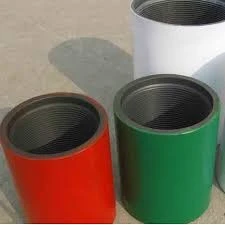- Afrikaans
- Albanian
- Amharic
- Arabic
- Armenian
- Azerbaijani
- Basque
- Belarusian
- Bengali
- Bosnian
- Bulgarian
- Catalan
- Cebuano
- Corsican
- Croatian
- Czech
- Danish
- Dutch
- English
- Esperanto
- Estonian
- Finnish
- French
- Frisian
- Galician
- Georgian
- German
- Greek
- Gujarati
- Haitian Creole
- hausa
- hawaiian
- Hebrew
- Hindi
- Miao
- Hungarian
- Icelandic
- igbo
- Indonesian
- irish
- Italian
- Japanese
- Javanese
- Kannada
- kazakh
- Khmer
- Rwandese
- Korean
- Kurdish
- Kyrgyz
- Lao
- Latin
- Latvian
- Lithuanian
- Luxembourgish
- Macedonian
- Malgashi
- Malay
- Malayalam
- Maltese
- Maori
- Marathi
- Mongolian
- Myanmar
- Nepali
- Norwegian
- Norwegian
- Occitan
- Pashto
- Persian
- Polish
- Portuguese
- Punjabi
- Romanian
- Russian
- Samoan
- Scottish Gaelic
- Serbian
- Sesotho
- Shona
- Sindhi
- Sinhala
- Slovak
- Slovenian
- Somali
- Spanish
- Sundanese
- Swahili
- Swedish
- Tagalog
- Tajik
- Tamil
- Tatar
- Telugu
- Thai
- Turkish
- Turkmen
- Ukrainian
- Urdu
- Uighur
- Uzbek
- Vietnamese
- Welsh
- Bantu
- Yiddish
- Yoruba
- Zulu
Understanding Vacuum Hose Couplings for Optimal Performance in Automotive Systems
Understanding Vacuum Hose Couplings A Comprehensive Guide
In the world of automotive and industrial applications, vacuum hose couplings play a pivotal role in ensuring efficient airflow and proper operation of various equipment. These couplings are integral components that connect hoses to systems requiring vacuum pressure, allowing for the transfer of gases and fluids while maintaining a secure seal. This article delves into the critical aspects of vacuum hose couplings, their types, applications, and maintenance tips.
What are Vacuum Hose Couplings?
Vacuum hose couplings are mechanical connectors that link vacuum hoses to machines or systems. Their primary function is to create a reliable, airtight connection that prevents the loss of vacuum pressure, which could lead to system inefficiency or failure. These couplings come in various designs to accommodate different hose sizes and application requirements, making them versatile components in numerous industries.
Types of Vacuum Hose Couplings
1. Barbed Couplings These are among the most commonly used types of couplings. Barbed ends hold hoses in place using friction. They are easy to install and remove, making them a preferred choice for quick connections.
2. Quick-Disconnect Couplings Designed for fast assembly and disassembly, quick-disconnect couplings allow for easy switching between hoses and equipment without the need for tools. They are widely used in scenarios where rapid changes are necessary, such as in laboratory setups.
3. Flanged Couplings These couplings feature a flange that provides a larger surface area for better sealing. They are typically used in high-pressure applications where a secure and long-lasting connection is crucial.
4. Clamp Couplings These consist of a coupling basic body with a clamp mechanism to secure the hose. They are particularly useful when dealing with high-vacuum environments or when the hoses experience movement or vibration.
5. Threaded Couplings Featuring male and female threads, these couplings provide a very secure connection. They are commonly used in permanent installations where the coupling does not need to be frequently disconnected.
Applications of Vacuum Hose Couplings
Vacuum hose couplings are utilized in diverse applications, including
- Automotive Systems In vehicles, vacuum systems control various components, such as brake boosters and emissions controls
. Proper vacuum hose couplings ensure these systems function efficiently.vacuum hose coupling

- Industrial Equipment Manufacturing processes often require vacuum systems to handle materials or gases. Couplings play a crucial role in the seamless operation of equipment like vacuum pumps, conveyors, and packaging machines.
- Laboratories In scientific research, vacuum systems are essential for experiments that require controlled environments. Quick-disconnect couplings allow for easy manipulation of connections as experiments progress.
- HVAC Systems Couplings are also vital in heating, ventilation, and air conditioning systems, connecting vacuum pumps and filtration systems to ensure proper airflow and dust management.
Maintenance Tips for Vacuum Hose Couplings
To ensure the longevity and efficiency of vacuum hose couplings, regular maintenance is essential. Here are a few tips
- Inspect Regularly Check for signs of wear, cracks, or damage in both the couplings and hoses. Replace any damaged parts immediately to prevent vacuum leaks.
- Clean Thoroughly Dirt or debris can accumulate in and around the coupling, which can hinder performance. Regular cleaning can prevent blockages and maintain an optimal seal.
- Check for Proper Fit Ensure that the hose is properly fitted onto the coupling to prevent leaks. If a connection feels loose, consider using a clamp or replacing the coupling with one that fits better.
- Avoid Over-Tightening While it's important to secure couplings, over-torqueing can lead to damage. Use the manufacturer’s recommended torque specifications to avoid breaking seals.
- Store Properly When not in use, store couplings and hoses in a clean, dry environment to prevent deterioration from environmental factors.
Conclusion
Vacuum hose couplings are crucial components in various mechanical and industrial systems, enabling seamless and efficient operations. Understanding the different types of couplings and their applications, along with adhering to maintenance practices, can significantly enhance the functionality and longevity of vacuum systems. Emphasizing the importance of these components encourages their proper selection, use, and care, which is vital for anyone working in industries reliant on vacuum technology.
-
Tubing Pup Joints: Essential Components for Oil and Gas OperationsNewsJul.10,2025
-
Pup Joints: Essential Components for Reliable Drilling OperationsNewsJul.10,2025
-
Pipe Couplings: Connecting Your World EfficientlyNewsJul.10,2025
-
Mastering Oilfield Operations with Quality Tubing and CasingNewsJul.10,2025
-
High-Quality Casing Couplings for Every NeedNewsJul.10,2025
-
Boost Your Drilling Efficiency with Premium Crossover Tools & Seating NipplesNewsJul.10,2025







